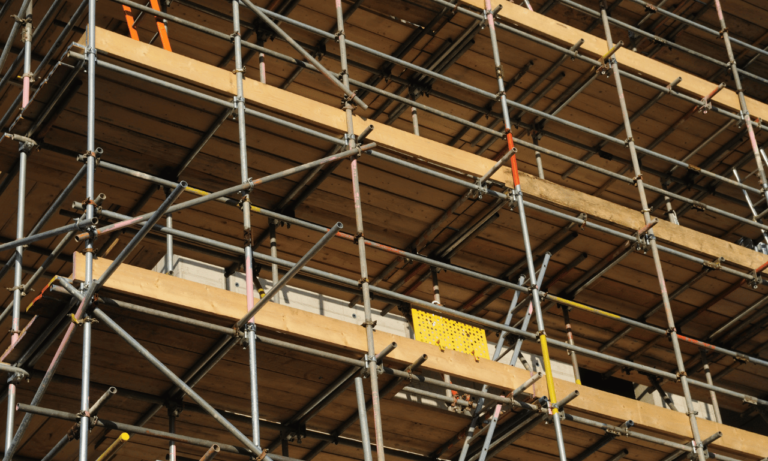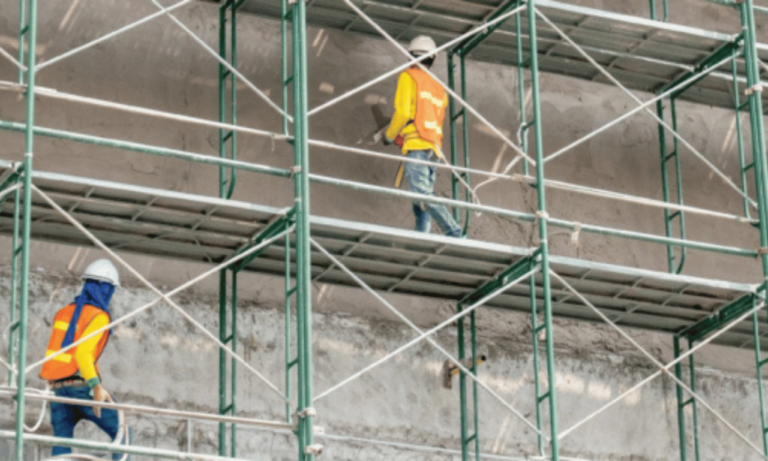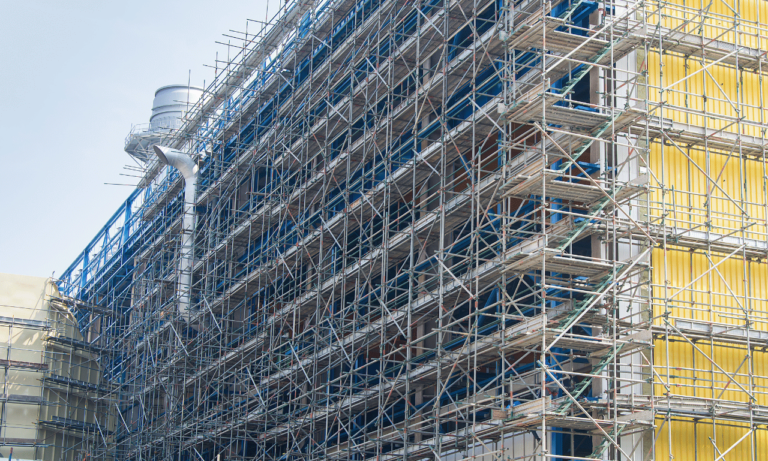Phone:
(+65)8319-0742
Glazing scaffolding is a vital component of high-rise construction and commercial glazing projects. It provides a safe and efficient means for exterior glass installation, building maintenance platforms, and facade access solutions. Whether it’s for industrial scaffolding or window replacement projects, ensuring the safety and proper setup of glazing scaffolding is essential for the well-being of workers and the success of the project.
Key Takeaways:
- Glazing scaffolding is crucial in high-rise construction and commercial glazing projects.
- Proper safety standards and regulations, such as those set by OSHA and ANSI/ASSP, must be followed.
- Manufacturer guidelines provide specific instructions for the installation, operation, and maintenance of glazing scaffolding equipment.
- Prioritizing glazing scaffolding safety ensures the well-being of workers and contributes to the productivity and success of the project.
- Common hazards in glazing scaffolding work include falls, collapsing scaffolds, working near power lines, and falling debris or objects.
OSHA Standards for Glazing Scaffolding
The Occupational Safety and Health Administration (OSHA) is a primary regulatory body in the construction industry. It sets the benchmark for safety standards, including those specific to scaffolding. OSHA’s standard 29 CFR 1926.451 provides comprehensive guidelines to ensure scaffolding safety, promoting sound construction practices and protecting workers from potential hazards.
One of the key requirements outlined in OSHA standards is the need for sound and rigid construction of scaffolding. This involves using sturdy materials, secure connections, and proper bracing to ensure stability. By following these guidelines, contractors can eliminate the risk of scaffold collapse, ensuring a safe working environment.
Load capacities are another crucial aspect covered in OSHA standards. It is essential to determine and adhere to the weight limits specified by manufacturers. Overloading scaffolds can compromise their structural integrity, leading to accidents and injuries. By strictly following load capacity guidelines, workers can mitigate the risk of scaffold failure.
Guardrails are a vital safety feature emphasized in OSHA standards. They act as a protective barrier, preventing falls from scaffolding. Properly installed guardrails provide a physical barrier and give workers a sense of security while working at heights. Compliance with guardrail requirements significantly reduces the risk of fall-related accidents.
OSHA standards also stress the importance of competent personnel for scaffolding erection, dismantling, and alterations. These tasks should only be performed by trained individuals who possess the necessary skills and knowledge. Competent personnel can ensure the proper assembly and disassembly of scaffolding structures, minimizing the risk of accidents caused by faulty construction.
Adhering to OSHA standards for scaffolding safety is crucial to promote a safe work environment and protect workers from potential hazards. By following sound construction practices, adhering to load capacities, installing guardrails, and employing competent personnel, contractors can ensure the well-being of their workforce and maintain regulatory compliance.
ANSI/ASSP A10.8-2019: Safety Requirements for Glazing Scaffolding
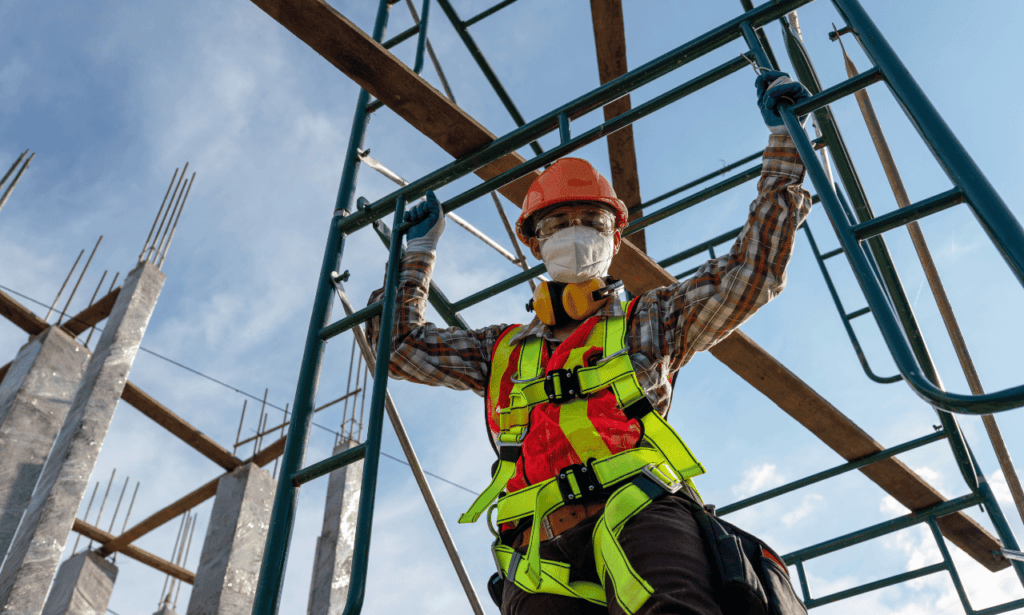
The American National Standards Institute (ANSI) and the American Society of Safety Professionals (ASSP) have jointly developed the ANSI/ASSP A10.8-2019, Safety Requirements for Scaffolding. This standard provides comprehensive guidelines for scaffolding safety, including design, construction, and the qualification of scaffold erectors.
Adhering to the ANSI/ASSP A10.8-2019 guidelines ensures that scaffolding is built and used safely in accordance with industry standards. These guidelines cover various aspects of scaffolding, including load capacities, proper design and construction, and the qualification of the individuals responsible for erecting and maintaining the scaffolding.
By following the ANSI/ASSP A10.8-2019 guidelines, contractors and workers can mitigate potential risks and promote a safe working environment. These guidelines serve as a valuable resource for ensuring the well-being of workers and the successful completion of glazing scaffolding projects.
Key Features of ANSI/ASSP A10.8-2019: Safety Requirements for Glazing Scaffolding
- Comprehensive safety guidelines for glazing scaffolding
- Detailed instructions for the design and construction of scaffolding
- Recommendations for load capacities and weight distribution
- Requirements for the qualification and training of scaffold erectors
- Guidance on inspections, maintenance, and repairs of scaffolding
Following the ANSI/ASSP A10.8-2019 guidelines safeguards worker safety, minimizes the risk of accidents, and ensures compliance with industry regulations. By staying updated on the latest safety requirements and implementing best practices, contractors and workers can create a secure environment for glazing scaffolding projects.
Image: Illustration of a worker following scaffolding safety guidelines during a glazing project.
Manufacturer Guidelines for Glazing Scaffolding
While complying with OSHA and ANSI/ASSP standards is essential, it is equally important to familiarize yourself with the manufacturer guidelines for glazing scaffolding. Each manufacturer develops comprehensive guidelines that provide detailed instructions for the installation, operation, and maintenance of their equipment. These guidelines are tailored to the specific specifications of the equipment, ensuring optimal performance and safety.
Installing glazing scaffolding according to the manufacturer’s guidelines is crucial to ensure the scaffold’s stability and structural integrity. The guidelines outline the correct assembly process, including the proper use of connectors, braces, and supports. By following these instructions, you can create a safe and reliable scaffolding system.
In addition to installation, the manufacturer guidelines cover the safe operation of the glazing scaffolding. This includes guidance on load capacities, maximum working heights, and proper use of safety equipment. Adhering to these guidelines reduces the risk of accidents and injuries while working at heights.
Regular maintenance of glazing scaffolding is vital to keep it in optimal condition. The manufacturer guidelines provide instructions on routine inspections, cleaning, and repairs. By following these maintenance recommendations, you can prolong the lifespan of the scaffolding and ensure its continued safety and reliability.
Product manuals, encompassed within the manufacturer guidelines, are an invaluable resource for any project. These manuals provide detailed information on the specific model of glazing scaffolding, including technical specifications, assembly diagrams, and troubleshooting tips. Familiarizing yourself with these product manuals will enable you to utilize the scaffolding more effectively and maintain its performance over time.
Key Points in Manufacturer Guidelines for Glazing Scaffolding
| Guideline Area | Key Points |
|---|---|
| Installation | – Follow the correct assembly process |
| – Properly use connectors, braces, and supports | |
| Operation | – Adhere to load capacities and working height limits |
| – Use appropriate safety equipment | |
| Maintenance | – Conduct regular inspections |
| – Perform necessary cleaning and repairs | |
| Product Manuals | – Consult technical specifications and assembly diagrams |
| – Utilize troubleshooting tips for efficient operation |
Following the manufacturer guidelines for glazing scaffolding is a critical step in ensuring the safety and optimal performance of the equipment. By understanding and implementing the recommended installation, operation, and maintenance procedures, you can create a secure and reliable scaffolding system that meets both industry standards and the manufacturer’s specifications.
Importance of Glazing Scaffolding Safety
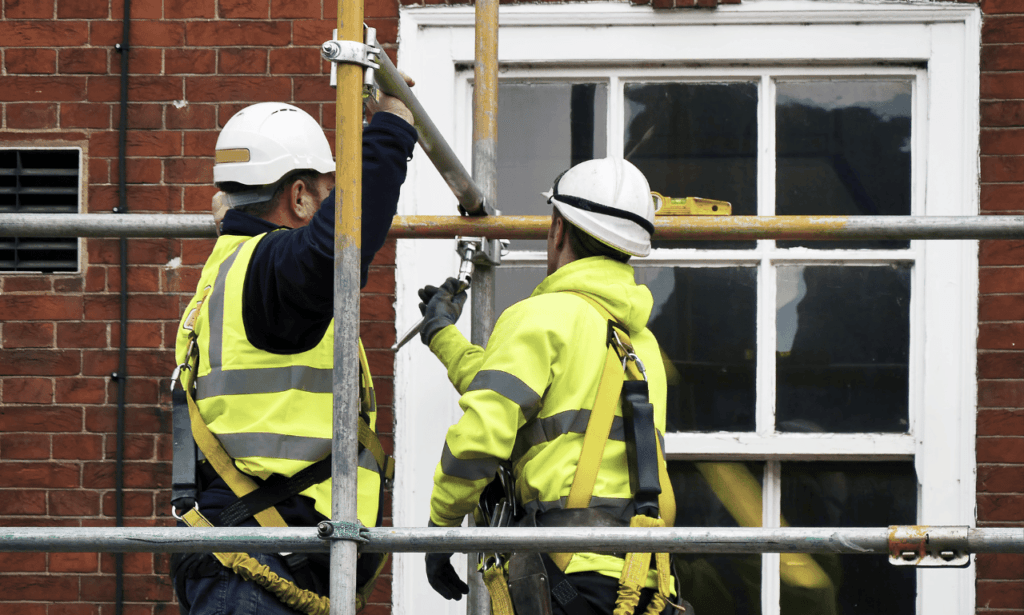
In any construction project, prioritizing workforce safety is of utmost importance. By adhering to safety standards and regulations, contractors and dealers not only ensure the well-being of workers but also contribute to the overall productivity and success of the project. Implementing proper safety measures promotes a safe working environment and protects the surrounding community.
When workforce safety is prioritized, it establishes a foundation of trust and confidence among the workers. They feel valued and supported, leading to increased morale and productivity. Workers who feel safe in their work environment are more likely to focus on their tasks and perform at their best, leading to improved project outcomes and efficiency.
Aside from the direct benefits to the workers, ensuring safety on the construction site also has a significant impact on the community at large. By strictly adhering to safety guidelines and regulations, the risk of accidents and potential harm to neighboring properties or individuals is minimized. It demonstrates a commitment to community safety and contributes to the overall well-being of the area.
Compliance with safety standards and regulations, including those set by organizations such as OSHA and ANSI/ASSP, is essential in maintaining a safe and compliant worksite. By staying updated on the latest safety guidelines and incorporating them into day-to-day operations, contractors and dealers can ensure that workforce safety remains a top priority and that projects are completed successfully.
| Benefits of Glazing Scaffolding Safety | Importance |
|---|---|
| Promotes a safe working environment | Ensures the well-being of workers |
| Boosts workforce productivity | Contributes to project success |
| Minimizes the risk of accidents | Prioritizes community safety |
| Maintains compliance with safety standards and regulations | Creates a safe and compliant worksite |
By recognizing the importance of glazing scaffolding safety and taking proactive measures to prioritize workforce well-being, contractors and dealers can contribute to project success, enhance productivity, and ensure the overall safety and satisfaction of all stakeholders involved in the construction process.
Common Hazards and Best Practices for Glazing Scaffolding
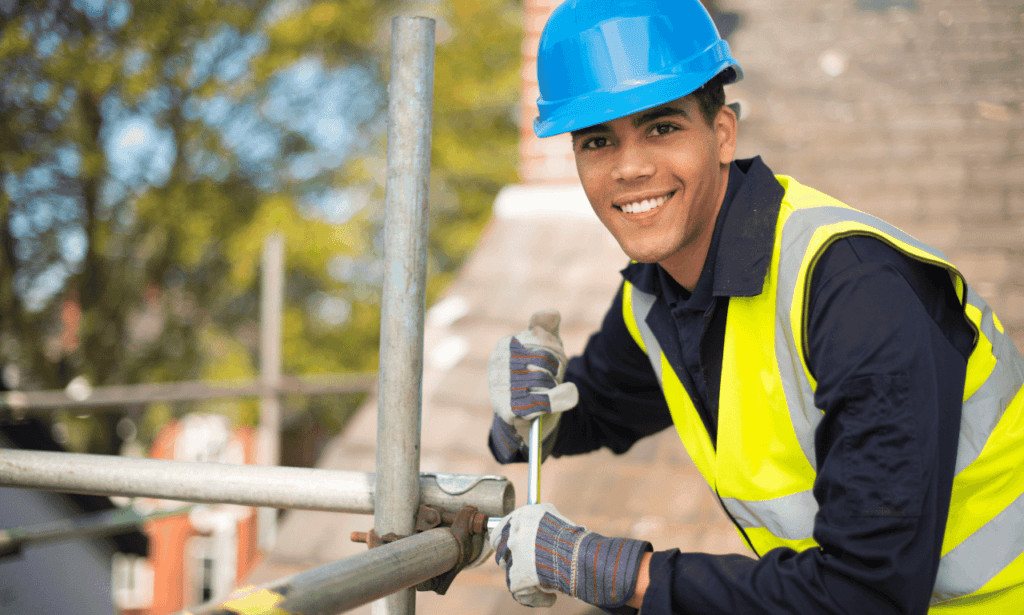
When it comes to glazing scaffolding work, there are several hazards that need to be addressed to ensure worker safety and project success. By understanding and mitigating these risks, contractors and dealers can create a safer working environment. Let’s explore some common hazards and best practices for glazing scaffolding:
Falling from Heights
One of the most significant hazards in glazing scaffolding is the risk of workers falling from heights. To prevent accidents, it is crucial to provide adequate fall protection measures. This includes using guardrails, safety nets, and personal fall arrest systems. Workers should also receive training on how to properly use and inspect fall protection equipment.
Collapsing Scaffolds
The stability of scaffolds is paramount for worker safety. Regular inspections should be conducted to identify any signs of damage or deterioration. Additionally, it is essential to follow manufacturer guidelines for scaffold setup and maintenance. Proper bracing and securing of scaffolding components can help prevent collapses and accidents.
Working Near Power Lines
Glazing scaffolding often requires working near power lines, which poses electrocution hazards. It is crucial to maintain a safe distance from power lines and adhere to industry regulations. Workers should be trained to identify potential electrical hazards and follow proper safety procedures, such as using non-conductive tools and equipment.
Falling Debris or Objects
Objects falling from heights can cause severe injuries to workers and bystanders. To minimize the risk of falling debris, establish exclusion zones and use protective barriers. Secure tools, materials, and equipment to prevent accidental drops. Regularly inspect the scaffolding and surrounding areas to identify and address any potential hazards.
By following best practices such as these, contractors and dealers can create a safer working environment for glazing scaffolding projects. Prioritizing worker safety not only reduces the risk of accidents but also enhances productivity and project efficiency.
Conclusion
The safety and well-being of workers are paramount considerations in any glazing scaffolding project. By implementing the safety guidelines, standards, and regulations outlined in this Glazing Scaffolding Safety & Setup Guide, contractors and dealers can create a safe and compliant worksite, prioritizing worker well-being. This not only contributes to the success of the project but also ensures the overall productivity and efficiency.
By adhering to best practices and staying up-to-date on safety standards, glazing scaffolding can be executed with maximum safety and project success. Contractors and dealers should consistently review the industry’s safety standards to incorporate improvements and advancements in scaffolding safety practices.
Remember, creating a safe working environment not only protects workers, but also maintains high levels of productivity and reputation. By prioritizing worker safety and following the recommendations in this guide, contractors and dealers can ensure the well-being of their workforce and achieve project success.
FAQ
What are the main safety standards for glazing scaffolding?
The main safety standards for glazing scaffolding include OSHA’s standard 29 CFR 1926.451 and the ANSI/ASSP A10.8-2019. These standards outline the general requirements for scaffolding safety and provide comprehensive guidelines for design, construction, and qualification of scaffold erectors.
Why is it important to follow manufacturer guidelines for glazing scaffolding?
It is important to follow manufacturer guidelines for glazing scaffolding because the guidelines provide specific instructions on how to safely install, operate, and maintain the equipment. These guidelines are tailored to the specifications of the equipment and help ensure safe usage.
How can I prioritize worker safety in glazing scaffolding projects?
To prioritize worker safety in glazing scaffolding projects, it is essential to follow the recommended safety standards and regulations, such as those set by OSHA and ANSI/ASSP. Additionally, implementing best practices like using guardrails, avoiding overloading scaffolds, wearing personal protective equipment, and regularly inspecting scaffolding for damage or deterioration can help mitigate hazards and promote a safe working environment.
What are the common hazards in glazing scaffolding work?
Common hazards in glazing scaffolding work include falls from heights, collapsing scaffolds, working near power lines, and falling debris or objects. To ensure worker safety, it is important to follow best practices, such as using guardrails, avoiding overloading scaffolds, wearing personal protective equipment, and regularly inspecting scaffolding for any signs of damage.


